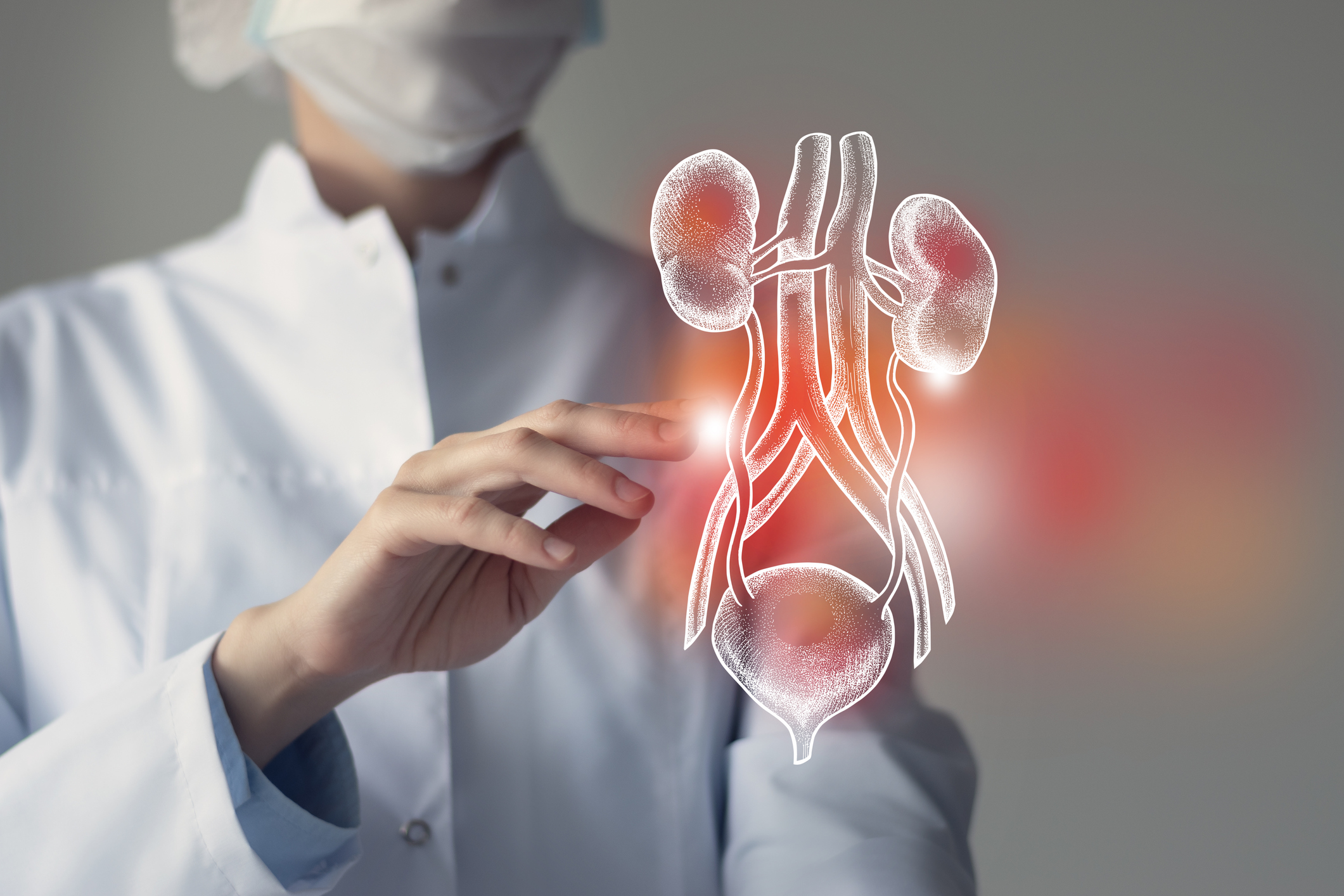
This eBook from Blue Heron Health NewsBack in the spring of 2008, Christian Goodman put together a group of like-minded people – natural researchers who want to help humanity gain optimum health with the help of cures that nature has provided. He gathered people who already know much about natural medicine and setup blueheronhealthnews.com. Today, Blue Heron Health News provides a variety of remedies for different kinds of illnesses. All of their remedies are natural and safe, so they can be used by anyone regardless of their health condition. Countless articles and eBooks are available on their website from Christian himself and other natural health enthusiasts, such as Julissa Clay , Shelly Manning , Jodi Knapp and Scott Davis. |
Managing infections in dialysis patients
Managing infections in dialysis patients is crucial because dialysis involves direct access to the bloodstream or the peritoneal cavity, both of which increase the risk of infections. Infections can complicate treatment, lead to sepsis, and, in severe cases, cause long-term damage to the kidneys or other organs. Here’s how infections can be managed and prevented in dialysis patients:
1. Understanding the Types of Infections in Dialysis Patients
Dialysis patients are at risk for various types of infections, which include:
a. Catheter-Related Infections (CRIs)
- Patients who undergo hemodialysis often use a vascular access catheter to access the bloodstream. This increases the risk of bacteremia (bacteria in the blood) or sepsis (a systemic infection).
- Peritoneal dialysis patients are also at risk for peritonitis, an infection of the peritoneum (the lining of the abdomen) caused by bacteria entering the dialysis catheter.
b. Dialysis Access Infections
- Infections can occur at the site where a fistula, graft, or catheter is inserted. These infections can spread into the bloodstream, leading to severe health complications.
c. Skin and Soft Tissue Infections
- Dialysis patients, particularly those with poor circulation or diabetes, are at a higher risk of developing cellulitis (bacterial skin infection) or skin ulcers, which may lead to more severe infections.
d. Urinary Tract Infections (UTIs)
- Dialysis patients, especially those with a history of urinary tract issues, are more vulnerable to UTIs, which can lead to further kidney complications.
2. Prevention Strategies
Preventing infections is critical for dialysis patients. Key prevention strategies include:
a. Proper Dialysis Access Care
- Hygiene: Patients and healthcare providers should ensure proper hygiene at the dialysis access site. Hands should be thoroughly washed before touching the access site, and sterile techniques should be used during dialysis to prevent infections.
- Catheter care: For patients using a catheter, the catheter insertion site should be kept clean and dry. Dressing changes should be done regularly and under sterile conditions to avoid contamination.
- Fistula/Graft care: Fistulas and grafts used for hemodialysis should be examined regularly for signs of infection, such as redness, swelling, or warmth around the access site. Fistulas should also be protected from injury and maintained with regular cleaning.
- Use of antibiotic locks: In some cases, a lock solution of antibiotics may be used to prevent infections in the catheter, especially for patients who are at high risk.
b. Routine Monitoring for Infections
- Regular monitoring of the dialysis access site and blood cultures can help identify infections early. Blood tests can monitor for the presence of bacteria or other pathogens in the bloodstream.
- Patients should report any symptoms of infection, such as fever, chills, pain at the catheter or access site, or cloudy dialysis fluid, to their healthcare team immediately.
c. Vaccination
- Dialysis patients are encouraged to stay up to date with vaccinations, including flu, pneumonia, and hepatitis vaccines, to reduce the risk of infections. Hepatitis B vaccination is especially important for hemodialysis patients to prevent hepatitis B transmission through bloodborne routes.
- Pneumococcal and flu vaccines should be given annually to reduce the risk of respiratory infections.
d. Use of Antiseptics
- Antiseptic solutions like chlorhexidine can be used to disinfect the access sites and skin before dialysis to reduce the risk of infections.
- Antibiotic ointments may be used in some cases to reduce the risk of infections at the dialysis access site.
e. Dietary Considerations
- Maintaining a balanced diet helps to boost the immune system, making it easier for the body to fight infections. Proper nutrition is essential for dialysis patients, and they should avoid foods that may increase infection risk, like undercooked meats.
- Adequate hydration is important, but dialysis patients often need to manage fluid intake based on the advice of their healthcare provider.
3. Prompt Detection and Treatment of Infections
If an infection is suspected, early diagnosis and treatment are key to preventing complications.
a. Identification of Infection
- Clinical signs such as fever, chills, redness, pain, or swelling around the dialysis access site should be taken seriously and investigated promptly.
- In peritoneal dialysis patients, cloudy dialysis fluid is often the first sign of peritonitis.
b. Use of Antibiotics
- If an infection is diagnosed, antibiotic therapy is often started promptly, based on the type of infection and the results of cultures or blood tests. Early use of antibiotics can prevent the infection from spreading.
- Dialysis patients may need intravenous antibiotics in more severe cases, especially if they develop sepsis or bacteremia.
c. Management of Dialysis Access Infections
- Catheter-related infections may require the removal of the catheter and the use of a new one. In some cases, a temporary catheter may be placed until the infection is cleared.
- Surgical interventions may be needed to clean or remove infected tissue around the dialysis access site. This is particularly true in the case of fistula/graft infections that don’t respond to antibiotics.
d. Management of Peritonitis (for Peritoneal Dialysis Patients)
- Peritonitis is usually treated with intraperitoneal antibiotics. If the infection is severe or doesn’t improve with treatment, it may require hospitalization and a change in the dialysis method.
- In some cases, surgical intervention may be required to remove infected tissue or to switch to hemodialysis if peritoneal dialysis becomes unsafe.
4. Preventing Cross-Contamination
- Staff hygiene: Healthcare workers should follow strict hygiene protocols, including wearing gloves and using sterile equipment, when handling dialysis machines and access sites.
- Patient education: Patients should be educated about the importance of cleanliness and hygiene when managing their dialysis access site. This includes proper handwashing and disinfecting the access site before dialysis.
5. Patient Education
- Signs of infection: Educate patients about the signs of infection, including fever, redness, swelling, pain, and discharge at the dialysis site, or cloudy peritoneal dialysis fluid. Early detection of symptoms can lead to quicker intervention and prevent serious complications.
- When to seek help: Dialysis patients should know when to seek medical help. If they develop symptoms of infection, they should contact their dialysis center or healthcare provider immediately.
6. Lifestyle Modifications to Reduce Infection Risk
- Avoiding smoking: Smoking can impair immune function and wound healing, increasing the risk of infection. Dialysis patients should be encouraged to quit smoking.
- Controlling blood sugar: For patients with diabetes, good blood sugar control is essential for reducing the risk of infection and promoting healing.
- Exercise: Regular, low-impact exercise can improve circulation and overall health, reducing infection risk. Patients should consult their healthcare provider before starting any new exercise program.
Conclusion
Managing infections in dialysis patients requires a multi-pronged approach, including preventing infections through proper hygiene and care of dialysis access sites, early detection, and appropriate treatment with antibiotics. Preventive vaccinations, regular monitoring, and patient education are also essential to reducing infection risks. Early intervention and prompt medical treatment are critical in managing infections and preventing complications in dialysis patients.
If you need more information about specific infection management strategies for dialysis patients, feel free to ask!
 The Chronic Kidney Disease Solution™ By Shelly Manning It is an eBook that includes the most popular methods to care and manage kidney diseases by following the information provided in it. This easily readable eBook covers up various important topics like what is chronic kidney disease, how it is caused, how it can be diagnosed, tissue damages caused by chronic inflammation, how your condition is affected by gut biome, choices for powerful lifestyle and chronic kidney disease with natural tools etc.
The Chronic Kidney Disease Solution™ By Shelly Manning It is an eBook that includes the most popular methods to care and manage kidney diseases by following the information provided in it. This easily readable eBook covers up various important topics like what is chronic kidney disease, how it is caused, how it can be diagnosed, tissue damages caused by chronic inflammation, how your condition is affected by gut biome, choices for powerful lifestyle and chronic kidney disease with natural tools etc.
Blue Heron Health News
Back in the spring of 2008, Christian Goodman put together a group of like-minded people – natural researchers who want to help humanity gain optimum health with the help of cures that nature has provided. He gathered people who already know much about natural medicine and setup blueheronhealthnews.com.
Today, Blue Heron Health News provides a variety of remedies for different kinds of illnesses. All of their remedies are natural and safe, so they can be used by anyone regardless of their health condition. Countless articles and eBooks are available on their website from Christian himself and other natural health enthusiasts, such as Shelly Manning Jodi Knapp and Scott Davis.
About Christian Goodman
Christian Goodman is the CEO of Blue Heron Health News. He was born and raised in Iceland, and challenges have always been a part of the way he lived. Combining this passion for challenge and his obsession for natural health research, he has found a lot of solutions to different health problems that are rampant in modern society. He is also naturally into helping humanity, which drives him to educate the public on the benefits and effectiveness of his natural health methods.